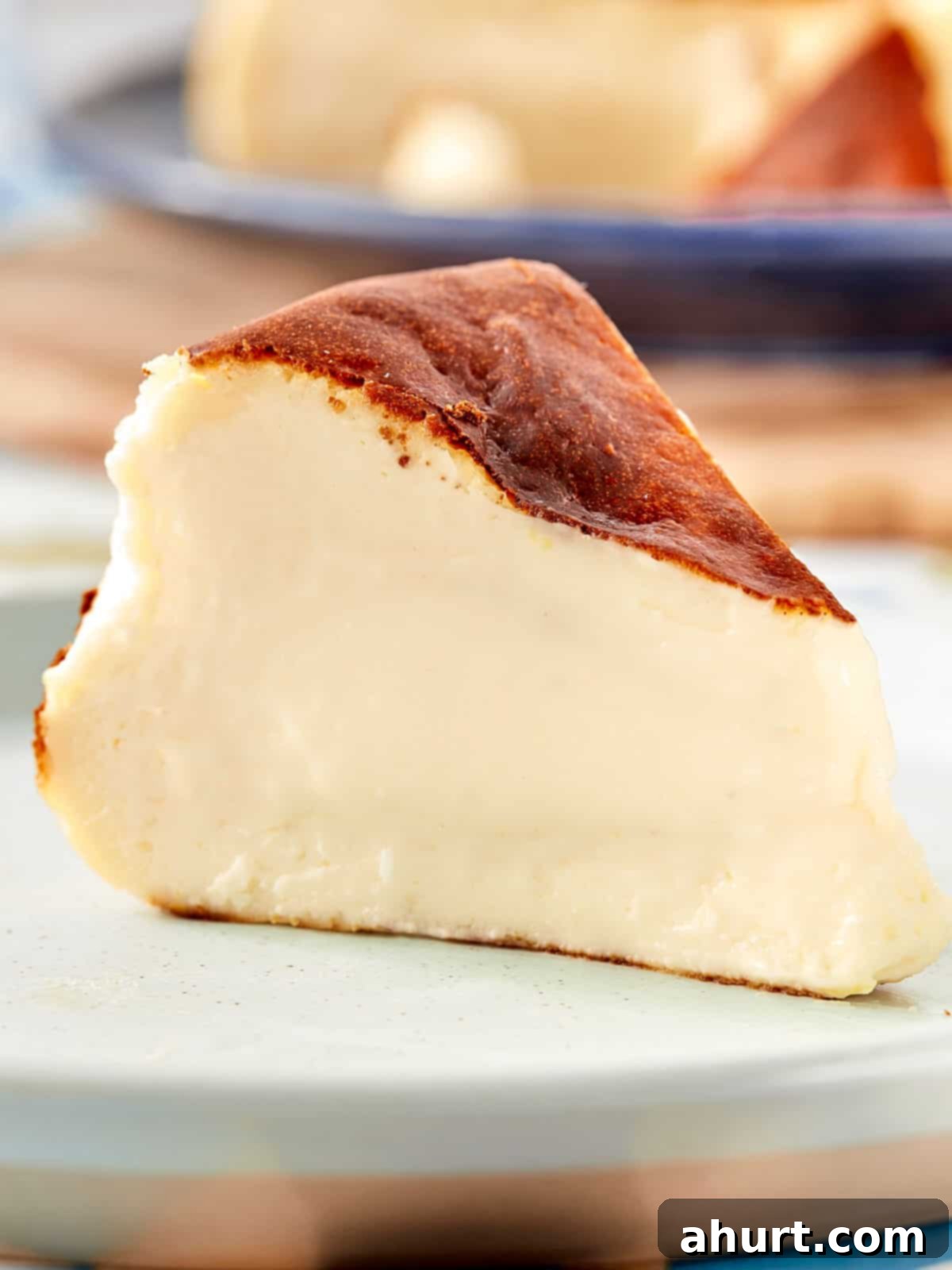The Ultimate Low-Fat Basque Cheesecake: Burnt, Creamy, & Guilt-Free Indulgence
Prepare to meet the dessert that took the internet by storm and captivated taste buds worldwide: the Low-Fat Basque Cheesecake. This isn’t just any cheesecake; it’s a culinary paradox, intentionally “burnt” and caramelized on the outside, yet unbelievably creamy, almost gooey, in its heart. It’s a masterpiece of contrasts, offering a unique texture and flavor profile that sets it apart from traditional cheesecakes.
Forget the fuss of a perfect crust – this beauty embraces a rustic, free-form elegance. Baked at a high temperature, it develops that signature deep golden-brown top, creating a dramatic, almost charred appearance that yields to an irresistibly smooth, decadent interior. It’s a little messy, wonderfully dramatic, and without a doubt, an absolutely unforgettable dessert experience that balances indulgence with a lighter touch.
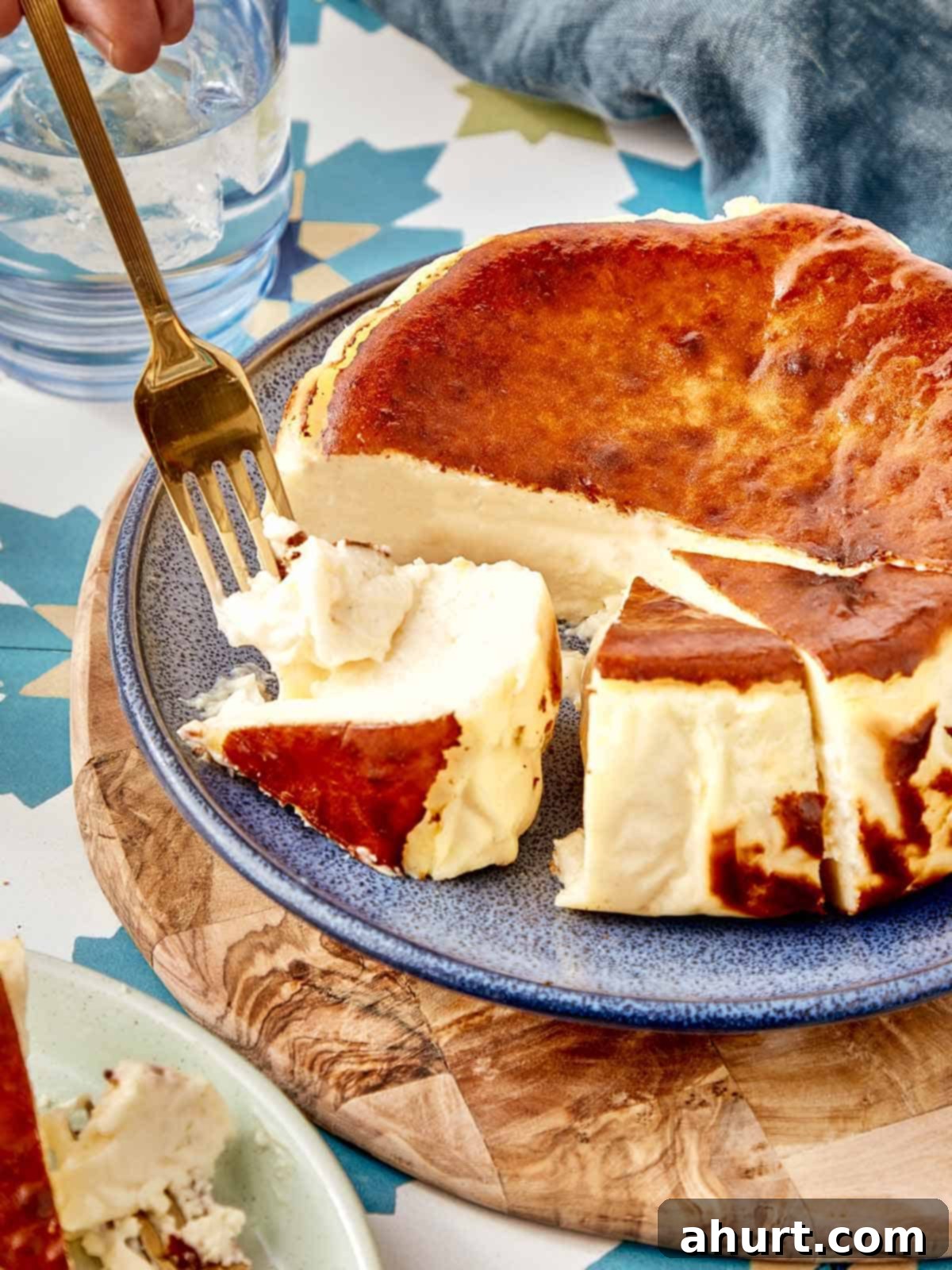
The Allure of Basque Cheesecake: What You’ll Need (and Why You’ll Love It)
What makes this particular Basque Cheesecake so incredibly irresistible and a favorite among dessert enthusiasts? It begins with its distinctive aesthetic: that dramatic, deeply caramelized, golden-brown top. Far from being a baking “mistake,” this rustic, almost burnt exterior is precisely what gives Basque cheesecake its iconic flavor and visual appeal, transforming simple ingredients into pure magic. This intense caramelization adds a layer of complex, bittersweet notes that beautifully complement the richness within.
Beneath this striking crust lies the dreamy heart of the cheesecake: a custardy, creamy, and melt-in-your-mouth smooth center. The texture is truly divine, with a delicate balance between firmness and luscious softness. Depending on your preference, you can chill it for a firmer, more traditional slice, or let it sit at room temperature for that signature gooey, lava-like middle that’s truly a delight. The beauty of this recipe lies in its adaptability to your preferred level of creaminess.
One of the biggest advantages of this Basque cheesecake recipe is its simplicity. There’s no crust to fret over, no delicate water bath required, and no complex techniques to master. It’s just you, a handful of simple, high-quality ingredients, and the oven working in harmony to create something utterly unforgettable. A whisper of vanilla and a bright touch of lemon zest are carefully folded into the batter, lifting all that richness and providing every bite with the perfect balance of indulgent sweetness and refreshing acidity. This harmonious blend of flavors makes it a perfect dessert for any occasion, from casual family gatherings to elegant dinner parties.
Unveiling the Core Ingredients: The Heart of This Low-Fat Basque Cheesecake
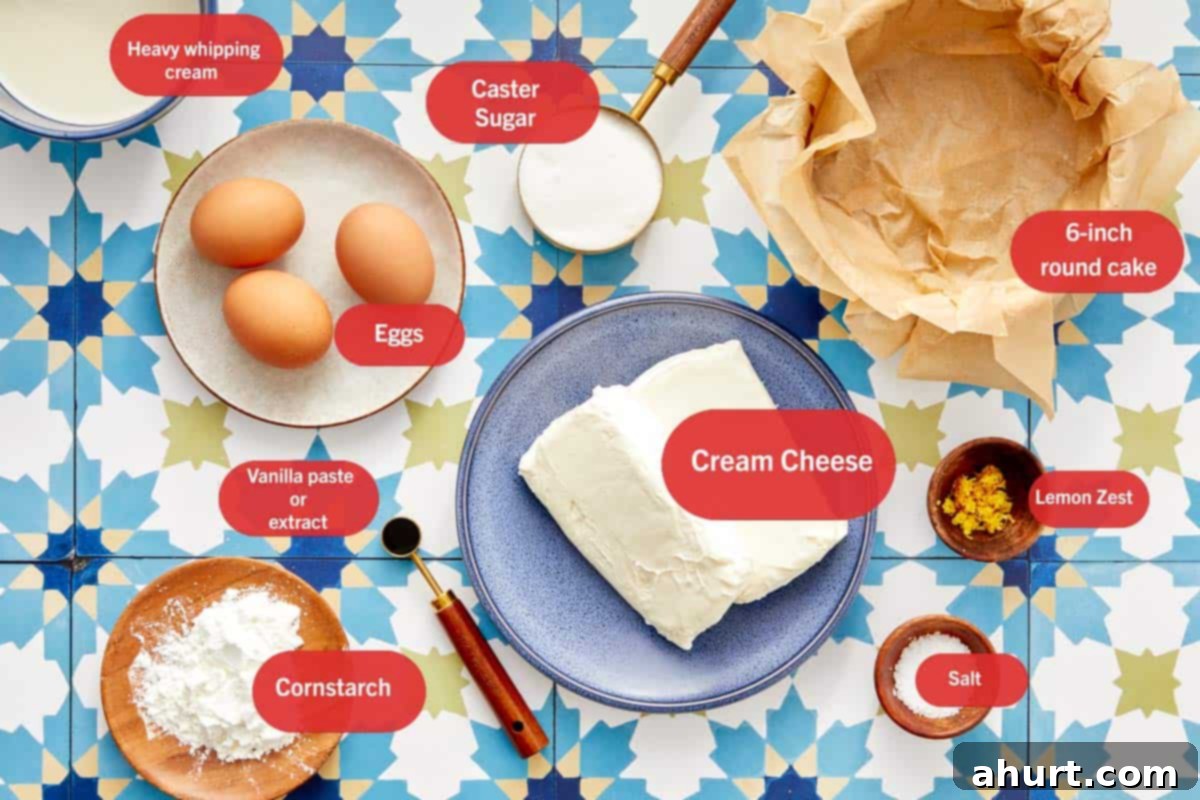
Every truly great cheesecake, regardless of its origin, is built upon a foundation of just a few simple, yet powerful, ingredients. For our Low-Fat Basque Cheesecake, these heroes are chosen not only for their flavor but also for their contribution to the unique texture and the overall lighter profile. Here’s what makes this Basque beauty so unforgettable:
- Low-Fat Cream Cheese: This is the absolute heart of our cheesecake, and a key player in making it a guilt-free indulgence. It delivers that essential smooth, tangy richness you expect from a cheesecake, but with significantly less fat. Using low-fat cream cheese allows us to achieve a beautifully creamy texture without compromising on flavor, making each slice lighter and more enjoyable. Ensure it’s softened to room temperature for a lump-free batter.
- Eggs: More than just binders, eggs are crucial for the structure and the luscious custardy texture of the Basque cheesecake. They emulsify the fats and liquids, ensuring the center is perfectly set yet tender. When added gradually and whisked gently, they contribute to the silky, melt-in-your-mouth quality that defines this dessert.
- Heavy Cream: While we’re aiming for “low-fat,” a touch of heavy cream is indispensable for achieving that signature silkiness and truly dreamy, melt-in-your-mouth texture. It adds a luxurious mouthfeel that elevates the cheesecake from good to extraordinary. The interplay between the low-fat cream cheese and the heavy cream strikes the perfect balance for richness without heaviness.
- Caster Sugar: This finely granulated sugar is ideal for cheesecakes because it dissolves easily, ensuring a smooth batter. It provides just the right touch of sweetness to balance the tangy cream cheese and, crucially, contributes to the deep caramelization that forms the dramatic “burnt” top, enhancing its flavor complexity.
- Vanilla Extract or Paste: A classic flavor enhancer that adds warmth, depth, and a hint of sweet aroma, making the cheesecake feel more comforting and complete.
- Lemon Zest: The bright, citrusy notes of lemon zest are essential. It cuts through the richness of the dairy, adding a refreshing counterpoint that brightens the entire flavor profile and prevents the cheesecake from feeling too heavy. It’s a small addition with a big impact!
- Cornstarch: A secret weapon for many creamy desserts, cornstarch acts as a stabilizer and thickener, ensuring the cheesecake sets beautifully and maintains its custardy texture, especially important when using low-fat ingredients.
Note: For precise quantities and detailed instructions, you’ll find the full list of ingredients and measurements conveniently located in the Recipe Card below.
Making Indulgence Guilt-Free: How to Lower The Calories in Your Basque Cheesecake
Cheesecake, by its very nature, is often perceived as an indulgence, a treat to be savored on special occasions. However, that doesn’t mean it has to feel heavy or leave you with a sense of guilt. This Low-Fat Basque Cheesecake recipe is designed to deliver all the decadence and flavor you crave, but with thoughtful tweaks to make it a significantly lighter option, allowing you to enjoy a slice (or two!) without reservation.
One of the simplest yet most impactful adjustments we make when baking this Basque Cheesecake is to substitute regular full-fat cream cheese with its low-fat counterpart. This swap is a game-changer. Low-fat cream cheese provides the exact same creamy, tangy base that is characteristic of any great cheesecake, but with a lighter calorie and fat count. The texture remains remarkably consistent, offering that velvety smoothness without the added richness that can sometimes weigh you down. This subtle change dramatically reduces the overall fat content, making it a more heart-friendly dessert choice.
Another brilliant modification to further reduce calories and sugar is incorporating a sugar-free sweetener. I personally love using an erythritol-based blend like Natvia in place of traditional caster sugar. This ingenious swap allows you to achieve that perfect balance of sweetness against the deep caramelization of the cheesecake’s top, all without the caloric impact of refined sugar. What’s truly remarkable is that this alteration is virtually undetectable. Family and friends consistently ask for seconds, often commenting on how rich and decadent it tastes, never suspecting it’s a healthier version. It truly delivers on the promise of a classic dessert experience with a modern, health-conscious twist, proving that you don’t have to sacrifice flavor for lighter eating.
Embracing these mindful ingredient choices means you can enjoy the exquisite pleasure of a perfectly crafted Basque cheesecake more often. It’s about smart substitutions that make a big difference in nutritional value, without diminishing the joyous experience of a luxurious dessert. This approach to baking empowers you to enjoy your favorite treats in a way that aligns better with a balanced lifestyle, proving that healthier options can be just as, if not more, delicious.
From Simple Ingredients to Golden Perfection: Bake It ‘Til It’s Golden
Creating this stunning Basque Cheesecake is a surprisingly straightforward process. In just a few simple steps, you’ll transform everyday ingredients into a show-stopping dessert with its dramatic caramelized crown and irresistibly creamy center. The magic happens quickly, thanks to the high-heat baking method that is fundamental to this style of cheesecake. Follow these steps for a perfect bake every time:
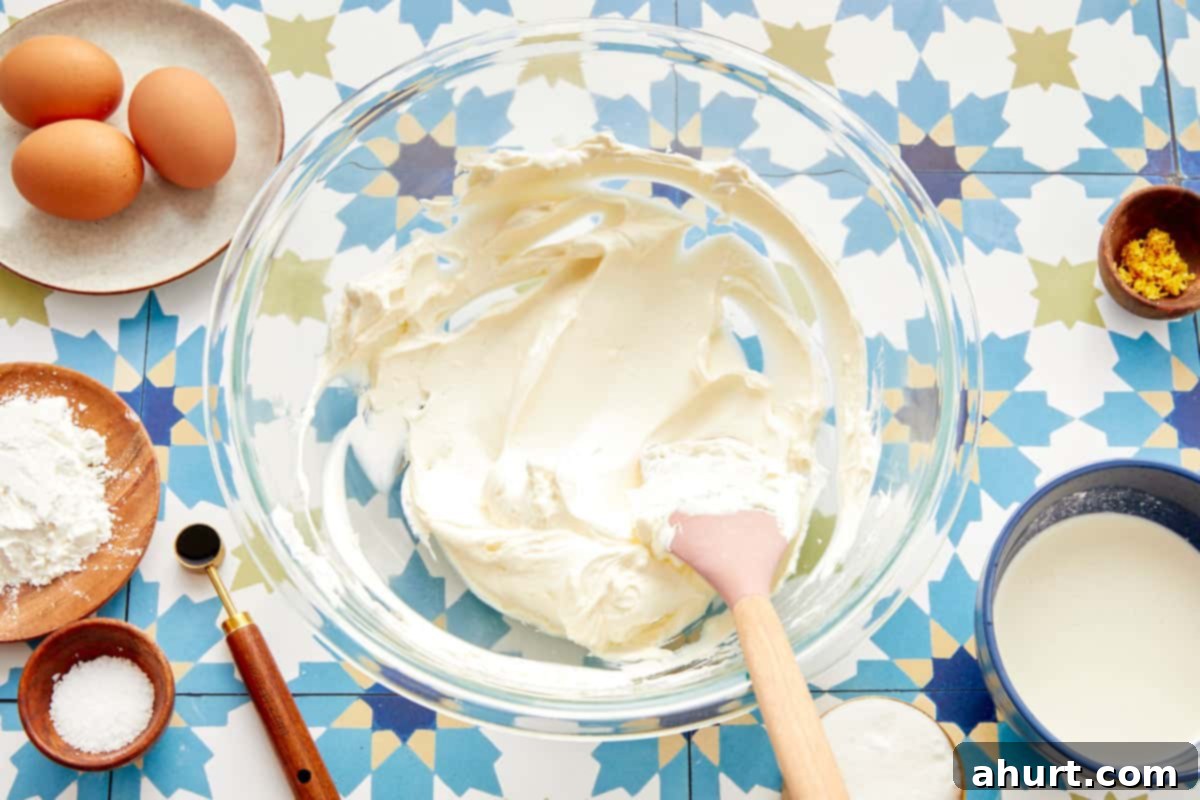
- Create a Creamy Base. Begin by ensuring your low-fat cream cheese is completely softened to room temperature. This crucial step prevents lumps and ensures a smooth, uniform batter. Beat the softened cream cheese in a large mixing bowl until it’s incredibly smooth and dreamy, with absolutely no lumps hiding in the mix. You can use a stand mixer with a paddle attachment or a hand mixer for this; aim for a light and airy consistency.
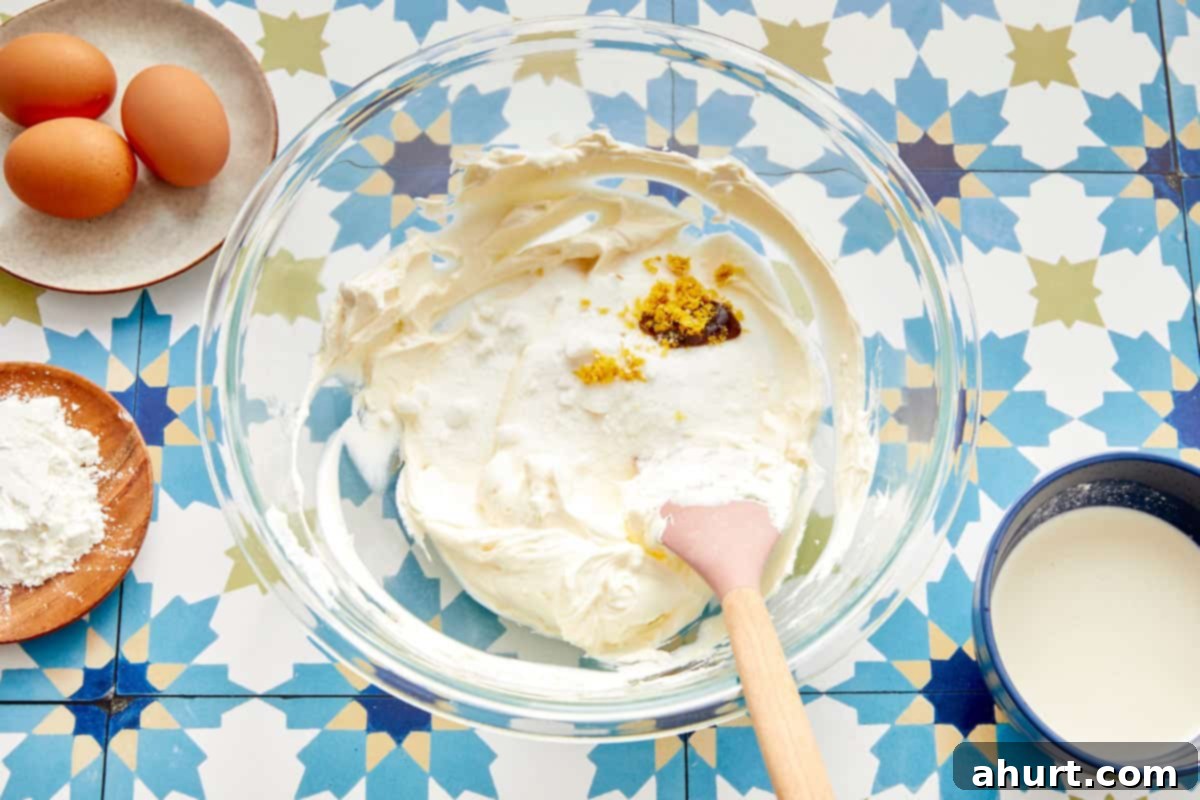
- Sweeten & Flavor. Once your cream cheese is smooth, whisk in the caster sugar (or your chosen sugar-free sweetener), a tiny pinch of salt to enhance all the flavors, the fragrant vanilla paste or extract, and the bright lemon zest. This is where the magic starts to unfold, as these ingredients infuse the base with their distinct characters, creating a beautifully balanced flavor profile that’s both sweet and subtly tangy. Continue whisking until everything is thoroughly combined.
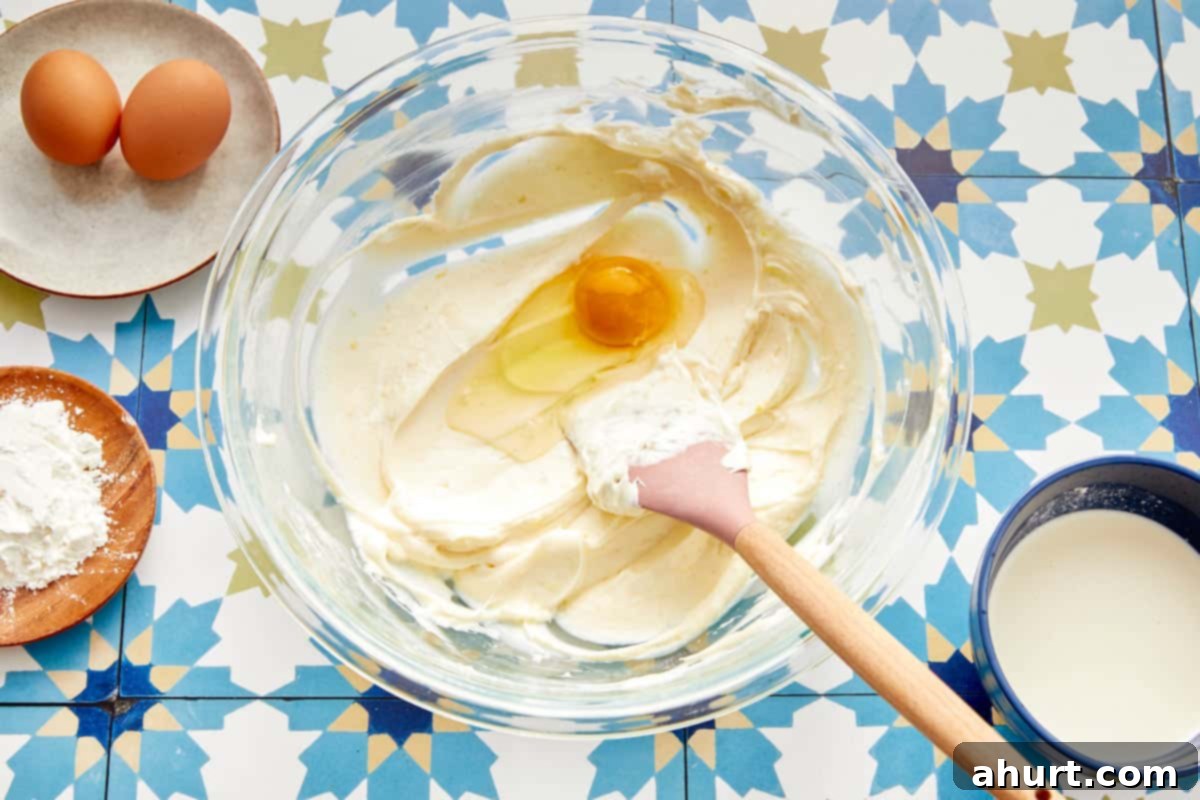
- Incorporate the Eggs. Add the large eggs one at a time, whisking gently after each addition until it is just fully incorporated into the batter. This step is crucial for maintaining the silky texture of the batter and preventing too much air from being incorporated, which can lead to cracks in the final cheesecake. No rushing here – patience gives you that perfect, dense, yet custardy center. Overmixing at this stage can also toughen the cheesecake.
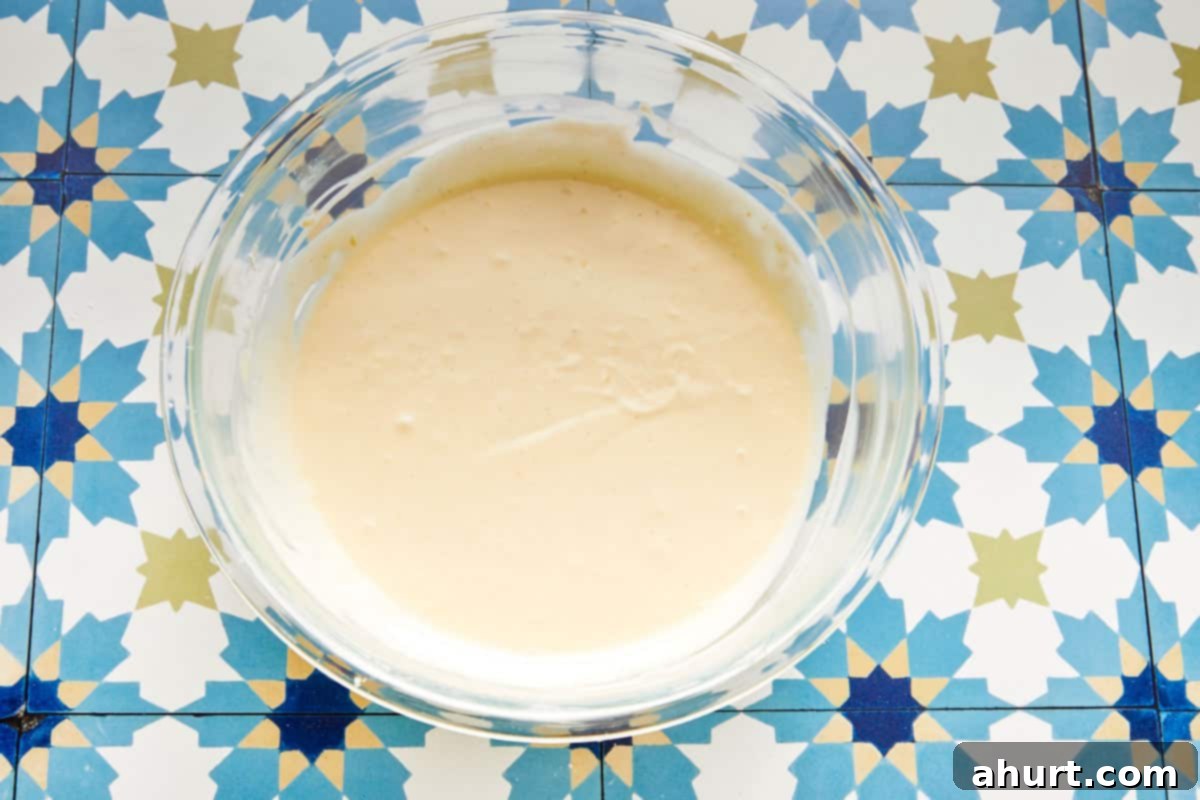
- Finish the Batter. Sift in the cornstarch over the batter. This helps prevent lumps and ensures it disperses evenly. Whisk gently until just combined. Then, pour in the heavy cream and whisk just until the batter is velvety smooth. Again, avoid overmixing at this stage; we’re aiming for a smooth, homogenous batter, not one filled with air bubbles. Too much air can affect the desired dense, custardy texture of the finished cheesecake.
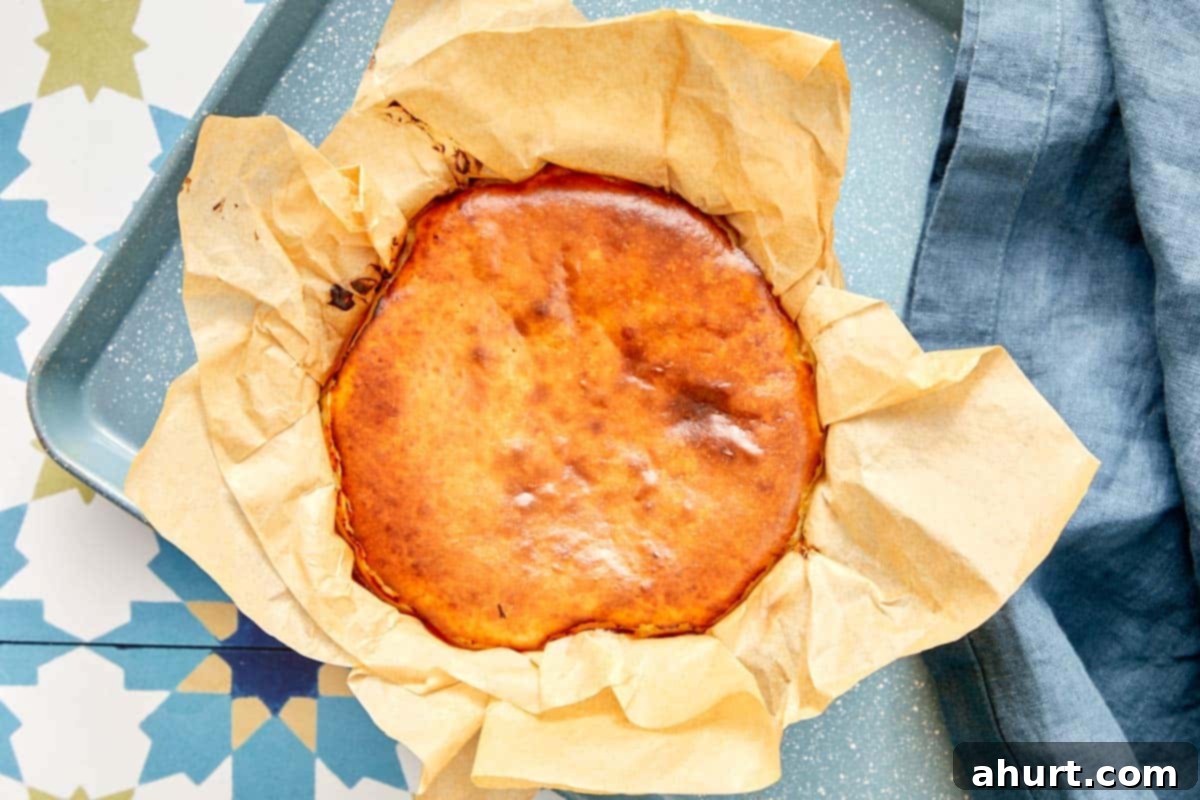
- Bake to Perfection. Prepare your 6-inch round springform cake pan by lining it with baking paper, ensuring the paper extends at least 2 inches (5cm) above the rim to accommodate the cheesecake’s puff during baking. Pour the perfectly smooth batter into your prepared pan. Give the pan a gentle tap or two on the counter to release any trapped air bubbles. Bake at a high temperature, typically 430°F (220°C), for about 25-35 minutes. You’re looking for a deeply golden-brown, almost “burnt” top, while the center still has a distinct, soft jiggle when lightly nudged. This jiggle indicates the perfect custardy texture within.
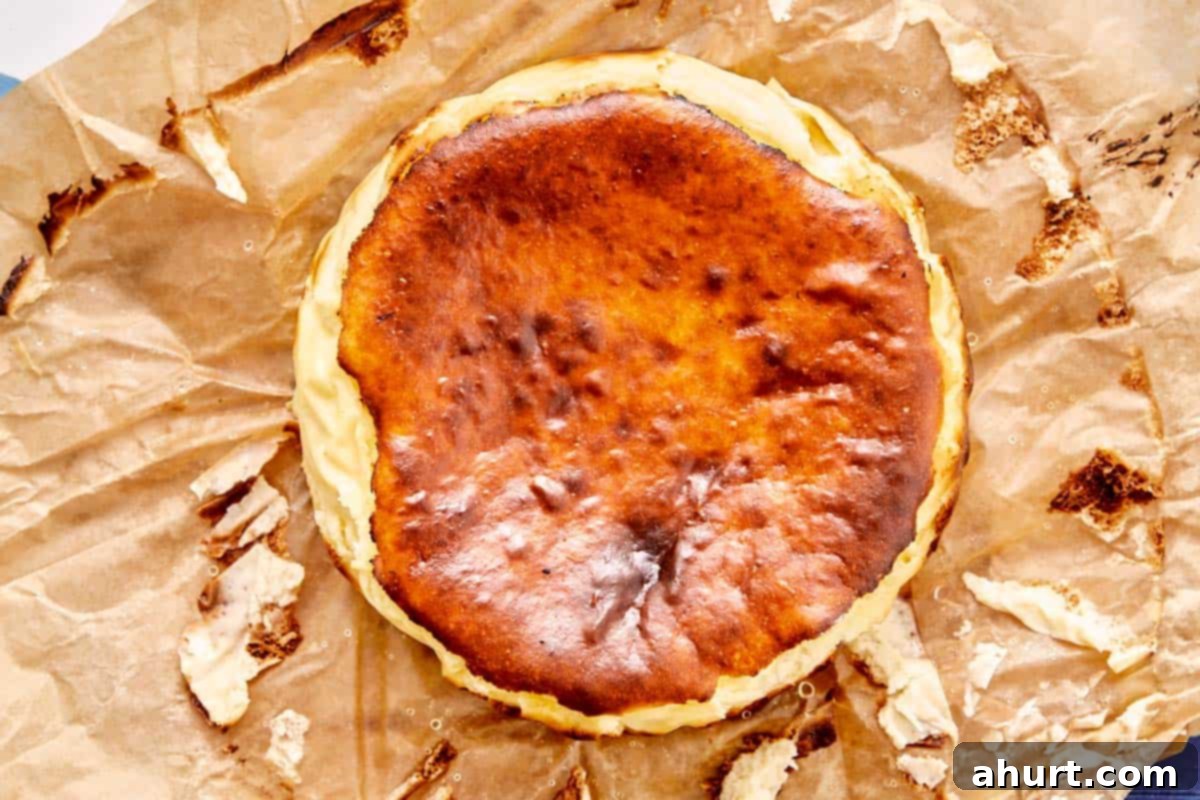
- Cool & Chill for the Best Texture. Once baked, remove the cheesecake from the oven and let it cool completely in the pan on a wire rack until it reaches room temperature. As it cools, it will naturally sink and set further. For the ultimate texture, chill the uncovered cheesecake in the refrigerator for at least 4 hours, or preferably overnight. This chilling period is crucial for developing its full flavor and firming up the custardy center. To achieve that signature gooey middle, allow the cheesecake to rest at room temperature for 30 minutes before serving. If you prefer a firmer slice, serve it directly from the fridge. For beautifully clean cuts, always use a hot knife – simply dip it in hot water and wipe it clean between each slice.
This Low-Fat Basque Cheesecake is a true testament to the idea that a healthier option doesn’t mean sacrificing flavor or indulgence. It’s a fantastic recipe to master, offering a unique dessert experience that is both sophisticated and comforting. Whether you’re serving it for a special occasion or simply treating yourself, it’s guaranteed to impress.
If this amazing Basque Cheesecake has stolen your heart and left you craving more delightful treats, here are a few more of my all-time favorites to keep your sweet tooth satisfied. For an elegant and irresistible dessert, the Coffee Toffee Tiramisu is pure indulgence with its layers of creamy mascarpone and a hidden layer of coffee toffee magic. If you’re a fan of warm, gooey, and nutty flavors, the Pistachio Skillet Cookie comes out golden with perfectly crisp edges and the most irresistible soft, chewy, nutty center. It’s perfect for sharing (or not!).
For something fun, nostalgic, and absolutely delicious, classic Churros are fried to perfection—crispy on the outside, soft on the inside, beautifully sugar-dusted, and made for dipping into chocolate sauce. If you’re leaning towards a more traditional comfort dessert with a twist, the Chocolate Pecan Pie is my idea of pure comfort: molten chocolate, toasted pecans, and a whisper of bourbon for an extra layer of warmth and sophistication. And for those moments when you have ripe bananas waiting on the counter, the Double Chocolate Banana Bread is a rich, fudgy, and just the right kind of indulgent treat that transforms simple fruit into a delightful baked good. Each of these recipes promises a memorable dessert experience, just like our incredible Low-Fat Basque Cheesecake!
Frequently Asked Questions About Basque Cheesecake
The tell-tale sign of a perfectly baked Basque cheesecake is its appearance and texture. The top should be deeply golden brown, almost charred, and beautifully caramelized. While the edges will appear set, the very center should still have a noticeable, soft jiggle when you gently shake the pan. This ‘jiggle’ indicates the inside is still custardy and creamy, which is the desired texture. Don’t worry if it looks underbaked; it will continue to set as it cools.
Yes, Basque cheesecake freezes beautifully, making it an excellent make-ahead dessert! To freeze, ensure the cheesecake is completely cooled. Then, wrap it tightly first in plastic wrap, followed by a layer of aluminum foil. This double-layer protection helps prevent freezer burn. It can be stored in the freezer for up to 1 month. When you’re ready to enjoy, simply thaw the cheesecake in the refrigerator overnight. For the best gooey texture, let it sit at room temperature for about 30 minutes before serving after thawing.
Achieving those perfectly neat, picture-perfect slices of Basque cheesecake is easy with one simple trick: use a hot knife. Before each cut, dip a sharp, thin knife into hot water, then quickly wipe it clean with a paper towel. The warmth of the blade will effortlessly glide through the creamy, custardy center without sticking or tearing, ensuring smooth, precise cuts every time. Repeat this process for each slice to maintain pristine presentation.
This recipe is designed for a 6-inch (15cm) round springform cake pan. The springform design makes it easy to release the cheesecake once it’s cooled and set. It’s crucial to line the pan generously with parchment paper, ensuring the paper extends at least 2 inches (5cm) above the rim. This extra height accommodates the cheesecake’s natural puff during high-heat baking and prevents overflow, while also giving it that charmingly rustic, crinkled edge.
Unlike traditional cheesecakes where cracks are a sign of trouble, a few small cracks on a Basque cheesecake are quite normal and even part of its rustic charm, especially on the “burnt” exterior. However, if you’re experiencing large, deep cracks, it might be due to overmixing the batter (incorporating too much air) or overbaking. Ensure you whisk gently, add eggs one by one, and remove the cheesecake from the oven when the center still has a slight jiggle to minimize cracking.
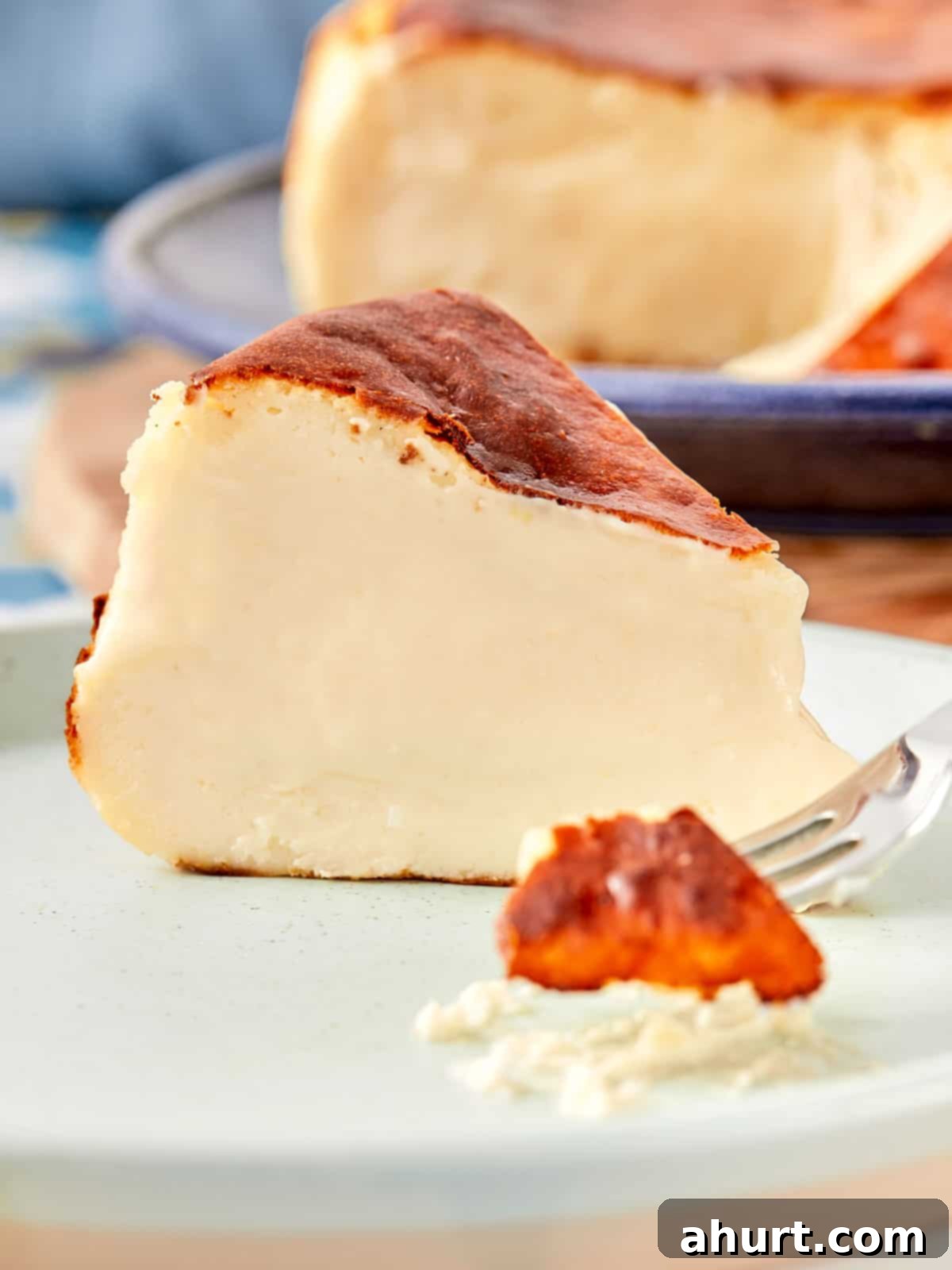
See It In Action: Watch Our Step-By-Step Basque Cheesecake Video
Ready to bring this internet-famous dessert to life in your own kitchen? Watching the process can often clarify steps and boost your confidence. Our comprehensive step-by-step video guides you through every detail, from perfectly prepping your ingredients to achieving that signature caramelized top and irresistibly creamy interior. See exactly how to mix the batter, prepare the pan, and recognize the crucial “jiggle” that signals doneness. This visual guide ensures you get the rustic, gooey, and unforgettable results you’re dreaming of. Press play and let’s bake some magic!
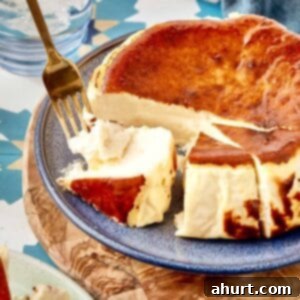
Saved
Pin
Low-Fat Basque Cheesecake Recipe
Ingredients
- 13.5 oz low-fat cream cheese softened
- ½ cup caster sugar (or sugar-free alternative like Natvia)
- ⅛ tsp salt
- ½ tsp vanilla paste or extract
- 3 large eggs
- 2 tbsp cornstarch
- 6.8 fl oz heavy/whipping cream
- 1 tbsp lemon zest ≈ zest of 1 small lemon
Instructions
-
Preheat your oven to 445°F (230°C). Prepare a 6-inch round springform cake pan by lining it with baking paper. Make sure the paper rises at least 2 inches (5cm) above the rim of the pan, as the cheesecake will puff up during baking.
-
In a large mixing bowl, add the softened low-fat cream cheese. Using a spatula or an electric mixer, beat until it’s completely smooth and lump-free, ensuring a uniform base for your cheesecake.
-
Add the caster sugar (or your chosen sugar-free alternative), salt, vanilla extract/paste, and lemon zest to the cream cheese mixture. Whisk until all ingredients are fully combined and the mixture is smooth.
-
Incorporate the eggs one at a time. Whisk gently after each egg until it is fully incorporated before adding the next. This gentle mixing helps maintain the smooth, custardy texture and prevents over-aeration of the batter.
-
Sift the cornstarch over the batter. Whisk just until it is combined and there are no visible dry spots.
-
Finally, pour in the heavy cream. Whisk gently one last time until the batter is smooth and velvety. Be careful not to overmix at this stage.
-
Pour the finished batter into your prepared springform pan. Place the cheesecake in the preheated oven and immediately reduce the heat to 430°F (220°C). Bake for approximately 25-35 minutes, or until the top is a deep golden brown and caramelized, but the center still jiggles slightly when the pan is gently nudged.
-
Remove the cheesecake from the oven and let it cool completely in the pan on a wire rack until it reaches room temperature. As it cools, it will deflate slightly and continue to set. Once at room temperature, refrigerate it uncovered for at least 4 hours to allow it to fully set and for flavors to meld, preferably overnight.
-
When ready to serve, gently remove the cheesecake from the springform pan and carefully peel back the baking paper. For the signature gooey center, let it rest at room temperature for about 30 minutes before slicing. Serve as is, or with your favorite toppings!
Notes
- Lower the calories: For a healthier twist without compromising on taste, I always recommend using low-fat cream cheese and a sugar-free alternative like Natvia for the sugar. This keeps the same great flavor and creamy texture, making it a more feel-good treat.
- Texture preference: For that signature gooey, lava-like center, allow the cheesecake to sit at room temperature for 30 minutes before serving. If you prefer a firmer, denser texture, chill it longer in the fridge and serve directly from cold.
- Cutting tip: To achieve perfectly clean, picture-perfect slices, use a hot knife. Dip a sharp, thin knife into hot water, wipe it clean, and then slice. Repeat this process between each cut to prevent the creamy center from sticking to the blade.
- Pan size: This recipe is specifically formulated for a 6-inch (15cm) round springform pan. If you use a larger pan, you might need to slightly reduce the baking time and the cheesecake will be shorter.
- Baking paper: Don’t skimp on the parchment paper! Line the pan so the paper rises at least 2 inches (5cm) above the rim. The cheesecake will puff up significantly during baking, and this prevents overflow while also creating its distinctive rustic edges.
- Browning: The dark, almost “burnt” and caramelized top is a hallmark of authentic Basque cheesecake. It’s entirely intentional and adds a wonderful depth of flavor – so don’t be alarmed if it looks very dark; it’s meant to be that way!
- Flavor twists: Feel free to experiment with additional flavors. A splash of your favorite liqueur (such as Amaretto, Grand Marnier, or dark Rum) can add sophistication. A pinch of cinnamon or cardamom can also introduce a warm, aromatic note.
- Serving ideas: This cheesecake is delicious on its own, but it also pairs beautifully with fresh berries, a drizzle of high-quality honey, a dollop of whipped cream, or a light berry coulis.
- Storage: Store any leftover cheesecake slices in an airtight container in the refrigerator for up to 3 days. For the best texture, always allow chilled slices to rest at room temperature for 15-30 minutes before serving.
- Freezing: You can easily freeze this Basque cheesecake. Once completely cooled, wrap it well in plastic wrap, then an additional layer of aluminum foil to prevent freezer burn. It can be frozen for up to 1 month. Thaw it in the refrigerator overnight before serving.
Nutrition
Nutrition information is automatically calculated and is an approximation. Values may vary based on specific ingredients and preparation methods.
